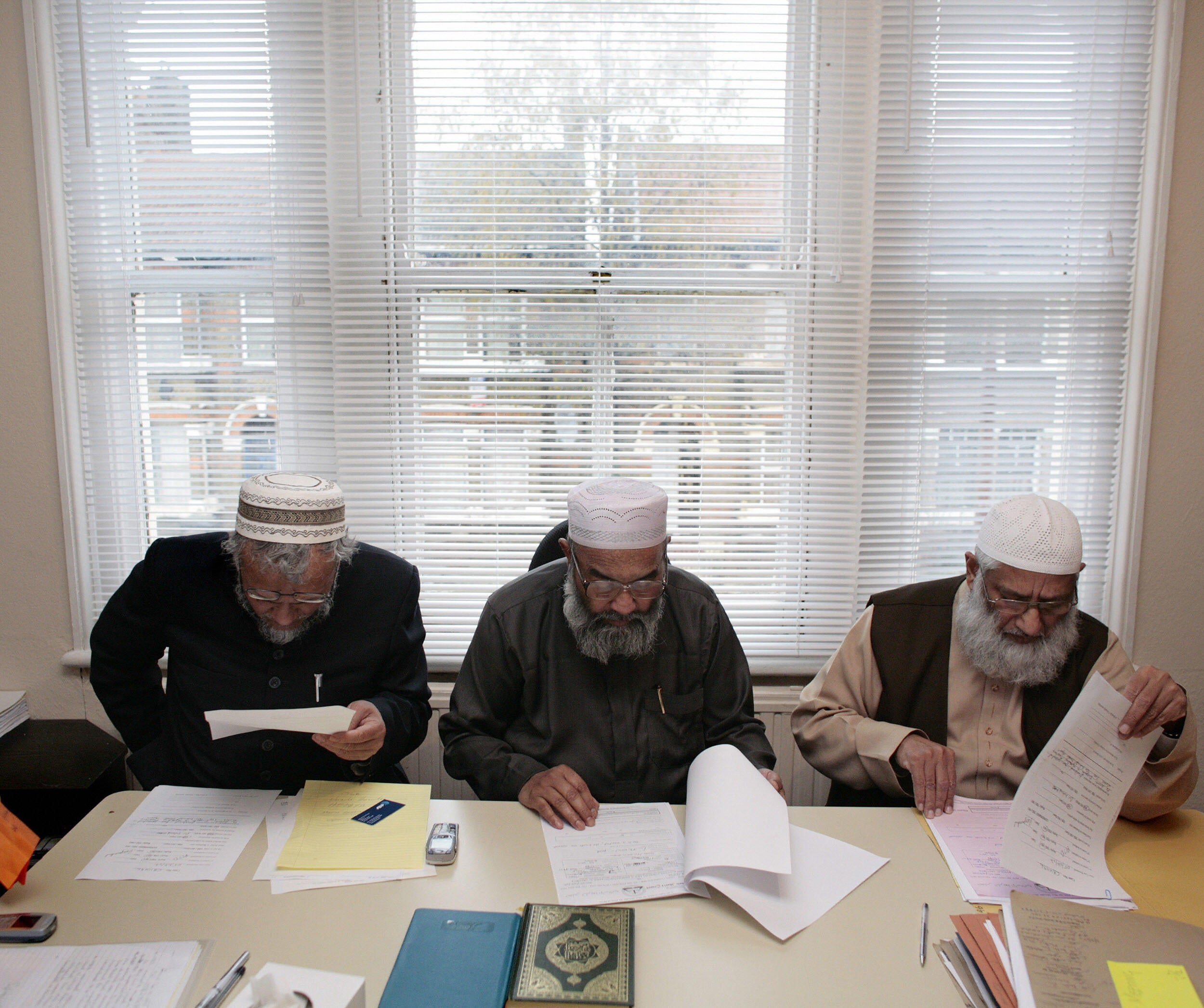The legal loophole of religious-only marriages is trapping victims of grooming and forced relationships
Doing away with the practice would provide us with an alternative means of curbing abuse and exploitation, placing the onus on those who ‘marry’ couples despite being aware of the risks facing women


Your support helps us to tell the story
This election is still a dead heat, according to most polls. In a fight with such wafer-thin margins, we need reporters on the ground talking to the people Trump and Harris are courting. Your support allows us to keep sending journalists to the story.
The Independent is trusted by 27 million Americans from across the entire political spectrum every month. Unlike many other quality news outlets, we choose not to lock you out of our reporting and analysis with paywalls. But quality journalism must still be paid for.
Help us keep bring these critical stories to light. Your support makes all the difference.
Last week saw the launch of Muslim Women’s Network UK (MWN)’s latest hard-hitting research, Muslim Women’s Experiences of the Criminal Justice System. The report shines a light on the struggles faced by female Muslim victims of abuse when trying to obtain justice.
Issues range from poor standards of investigation, disempowering flaws in victims’ right to review, incorrect information being given, a lack of understanding of the links between revenge porn and honour-based violence, and, if all that wasn’t enough, there is even an element of victim-blaming (apparently, the natural consequence of texting an ex-partner to leave you alone is for him to punch your car).
Amidst all this, however, there is an issue that goes beyond the realm of the criminal justice system and extends into the world of family law; that of religious-only marriages.
Fiza* started a relationship with Tariq*, who soon became controlling and emotionally abusive. With the couple both being Muslim, he began pressurising her to marry him and misusing faith to guilt-trip her. It seems Tariq had decided all of a sudden that “dating” was now a sin, something that apparently he hadn’t thought of when they started their relationship. Fiza did not want to get married but felt she had no choice. She was taken to a house where an Islamic ceremony took place in the presence of an Imam and two men acting as witnesses. Fiza eventually ended the relationship; she did not accept she was married and certainly did not want to continue with the marriage even if she was. Tariq, however, demanded she return to him, and started a campaign of harassment.
The above case was included in MWN’s report as an example of where police had missed that a forced marriage had potentially taken place (they logged it as a harassment case only). However, it also highlights how Islamic marriages are being performed as easily as getting a haircut and are being used as a means to trap and control victims. It goes beyond the subject of a lack of rights and legal recourse in the event of marital breakdown; these religious-only marriages are actually being used to tie victims to their perpetrators. Although Fiza found the courage to break the shackles, many others would not feel able to.
This isn’t the first time MWN’s research has highlighted the use of Islamic marriages as a means to abuse Muslim women and girls. In 2013, its report Unheard Voices shared how a network of groomers would use Islamic marriages to snare victims. Jamila’s* “husband”, for example, said they needed to get married in secret until he could get his parents’ approval to the marriage. Unknown to her, he was already married with children.
Using various exploitative tactics, he coerced her into having sex with other men to “earn additional income” to help pay off his debts and buy him designer watches and clothes. He started taking Jamila to various houses so his friends could have sex with her. She was not the only one exploited in this way either; the network had many so-called “wives” that were “religiously” married.
This legal loophole needs to stop – and the way to do this is to criminalise the conducting of religious marriages that cannot or do not create a lawful marriage (unless of course the couple are already legally married). This means that the “Imam” (or celebrant) who married Fiza to Tariq would be guilty of an offence, as would those who performed marriages for the network of groomers.
Yes, there are other laws available that could potentially be relied upon in such cases. However, we also know of the difficulties female Muslim victims, and victims generally, can face in cases of domestic abuse, forced marriage and sexual exploitation. The internalisation of concepts of shame and honour aside, they may be financially dependent, in danger of homelessness, at risk of community ostracisation or even honour-based violence if their ordeal came to light.
Plus, they may face various hurdles even when they do seek justice. In some of the aforementioned issues outlined in the Muslim Women’s Experiences of the Criminal Justice System report, for example, victims have had to deal with evidence in the form of a laptop disappearing without explanation as well as expecting a victim of rape to discuss a victim impact statement over the phone while travelling on public transport.
More often than not, crimes of forced marriage and sexual violence need the cooperation of the victim to bring about charges and prosecution; unless a child is involved, generally lack of consent needs to be established which rarely can be achieved without the victim’s corroboration. Perpetrators know this, which is why they use various tactics to ensure the victim’s silence is assured. They’re smart, and we need to be smarter.
Closing the loophole would provide us with an alternative means by which to curb abuse and exploitation because it will place the onus on celebrants. Granted, celebrants are also required to ensure that a marriage is not forced, and yet forced marriages continue to be prevalent. However, the difference here is that it would be irrelevant whether the victim “consented” to the religious-only marriage – it would be a procedural offence.
We could ask of celebrants: have you performed a marriage that is legally recognised? Were you provided with a marriage certificate that proved they were already legally married? If the answer to both those questions was no, they would be found guilty. To save themselves, celebrants will insist on proof of a civil marriage – but that will, of course, be too onerous for abusers because, aside from the legal rights that would be afforded to the victim and the fact that they would be unable to be married to more than one woman at the same time, they would no longer be able to hide in plain sight.
Admittedly, this new offence would not guarantee an immediate end to religious-only marriages (if criminalisation was enough of a deterrent, then we would live in a crime-free world), but it would certainly make a dent. If introduced, potential victims would be more likely to question why the “love of their life” wants to break the law by having a religious-only marriage, celebrants would not want to to risk getting involved, and, if nothing else, at least no one would be able to place blame on our family laws. This law reform makes sense, and if we are serious about ending violence against women and girls, it needs to be implemented now.
(*Names have been changed to protect identities)
Nazmin Akthar is chair of Muslim Women’s Network UK
Join our commenting forum
Join thought-provoking conversations, follow other Independent readers and see their replies
Comments